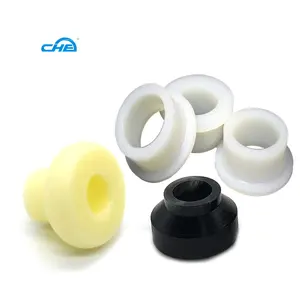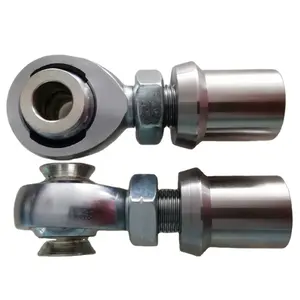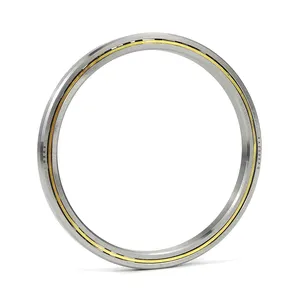Popular in your industry


















































Top categories
About miniature electromagnetic clutch
What is Electromagnetic Clutch For Small Applications
Electromagnetic clutches are specialized devices designed to transmit torque in small-scale applications, typically found in machinery and equipment used in the industrial and commercial sectors. These clutches serve the essential purpose of engaging and disengaging the drive line, which is crucial for controlling the operation of machinery. They are particularly beneficial in applications where precise control over the speed and motion of machinery is required, such as in printing, packaging, and textile manufacturing equipment.
The principle behind an electromagnetic clutch is relatively straightforward. It operates by using electromagnetic force to couple or decouple the clutch. The clutch consists of two main parts: the rotor, which is connected to the machinery, and the armature, which is connected to the secondary part of the clutch. When an electric current passes through the coil of wire in the rotor, it generates a magnetic field. This magnetic field then attracts the armature, connecting the two parts of the clutch. To disengage the clutch, the current is cut off, and the armature is held in place by springs or other mechanical means, ensuring that the machinery can be controlled precisely.
These clutches are designed for users who require a reliable and adjustable method to engage and disengage machinery frequently. They offer benefits such as remote operation, as well as the ability to control speed and torque. Electromagnetic clutches are also preferred in applications where maintenance-free operation is necessary, as they do not require traditional fluid-based lubrication systems.
Types of Electromagnetic Clutch for Small Applications
Electromagnetic clutches come in various types to suit different small applications:
-
Standard Electromagnetic Clutch: This type is commonly used in vehicles for fan control, air-conditioning units, and industrial applications where a simple on/off operation is sufficient. It is a versatile choice for general use.
-
Multiple-Disc Electromagnetic Clutch: Offering higher torque capacity compared to standard clutches, multiple-disc variants are ideal for industrial machinery and marine applications. They can handle more demanding loads and are suitable for use in equipment that undergoes frequent engagement cycles.
-
Dry Electromagnetic Clutch: Unlike wet clutches which use oil for lubrication, dry clutches do not need additional lubrication and are typically used in consumer electronics and computer peripherals where oil leakage is a concern.
-
Magnetic Particle Electromagnetic Clutch: These clutches utilize magnetic particles to transmit torque. They are known for their smooth operation and are often found in office machinery and other electronic devices.
-
Low-Speed Electromagnetic Clutch: Specifically designed for applications requiring precise control at low speeds, these clutches can be found in robotics and other machinery where slow, incremental movements are necessary.
How to choose Electromagnetic Clutch For Small Applications
Selecting the right electromagnetic clutch for small applications involves considering several factors closely related to the intended use case. When choosing a clutch for industrial machinery or automotive systems, it is crucial to match the type of clutch with the specific requirements of the application—be it size constraints, operating environment, or performance expectations.
For businesses dealing with high-speed machinery or precision equipment in industries like printing or packaging, an electromagnetic clutch with rapid response and minimal slippage would be essential. In contrast, those involved in manufacturing or automotive sectors might prioritize robustness and durability, thus opting for a clutch with a higher torque capacity and longer service life.
It's also vital to consider the compatibility of the clutch with existing systems in terms of mounting type and space constraints. Businesses must ensure that their chosen clutch can be easily integrated into their current designs without significant modifications.
Additionally, businesses should take into account the ease of maintenance and availability of spare parts when selecting a clutch. A supplier on a B2B platform like Alibaba.com can provide detailed specifications and support services that assist in making an informed purchasing decision.
About Electromagnetic Clutch For Small Applications on Alibaba.com
Alibaba.com stands as a global marketplace connecting businesses with a vast selection of suppliers offering electromagnetic clutches suitable for various industrial applications. With over two decades of experience since its inception in 1999, Alibaba.com has established itself as an instrumental platform for B2B trade across over 190 countries and areas. The site's user-friendly interface allows buyers to navigate through options with ease while facilitating communication with suppliers in multiple languages.
For small applications that require precise control over machinery operations without the need for complex mechanical linkages, Alibaba.com offers an array of solutions tailored to meet specific business requirements. Whether it's for packaging machinery, textile processing, or general automation systems, buyers can source high-quality electromagnetic clutches from verified suppliers on Alibaba.com.
Moreover, Alibaba.com's Trade Assurance service provides an additional layer of security by safeguarding payments until buyers confirm satisfactory delivery. This assurance enables businesses to invest in critical components confidently while expanding their operational capabilities. By leveraging Alibaba.com’s comprehensive platform features—from easy mobile buying experiences to order handling and delivery services—businesses can streamline their procurement process effectively while ensuring reliable performance from their electromagnetic clutches.
Common FAQs for Electromagnetic Clutch For Small Applications
What is an electromagnetic clutch and how does it work?
An electromagnetic clutch is a device that transfers torque from a driving shaft to a driven shaft without physical contact, working on the principle of electromagnetic induction. When the clutch is energized, it creates a magnetic field that locks the two shafts together, allowing for power transmission.
What are the main types of electromagnetic clutches used in small applications?
The main types of electromagnetic clutches include friction, magnetic, and eddy current clutches. Each type operates on different principles: friction clutches transmit power through rubbing surfaces, magnetic clutches use magnets to engage or disengage components, and eddy current clutches transfer power through electromagnetic currents induced by an external magnetic field.
How do I determine the correct size of an electromagnetic clutch for my application?
The size of an electromagnetic clutch required for an application depends on the torque it needs to handle. You must match the clutch to your machinery's specifications, taking into account the maximum torque load and speed it's expected to manage.
What factors should I consider when selecting an electromagnetic clutch for my business?
When selecting an electromagnetic clutch, consider the environment it will operate in, the size of the driving and driven shafts, the maximum torque load it needs to handle, its operating speed, and whether it's for continuous or intermittent duty.
Can electromagnetic clutches be customized for specific applications?
Yes, many suppliers offer customizable options for electromagnetic clutches, including specific torque load requirements, shaft sizes, voltage ratings, and even custom designs to fit unique applications.
What are the advantages of using an electromagnetic clutch over a mechanical one?
An electromagnetic clutch provides more precise control as it allows for finer adjustment of the engagement and disengagement of the driving and driven members, reducing wear and tear on the system.
How do I ensure the longevity of an electromagnetic clutch in my application?
To ensure longevity, follow proper installation guidelines, use the clutch within its specified torque and speed ratings, and adhere to a regular maintenance schedule as recommended by the manufacturer.
What is an eddy current clutch and where is it used?
An eddy current clutch uses an induced magnetic field to create torque. It's typically used in applications requiring high precision and minimal wear, such as in electronic printing or medical devices.
Are there any maintenance requirements for electromagnetic clutches?
Maintenance for electromagnetic clutches is minimal and generally involves periodic checks for wear and proper alignment. Some types may require occasional lubrication or inspections, but overall they are designed for long service life without extensive maintenance.
Can electromagnetic clutches operate in wet or dusty environments?
While many electromagnetic clutches are designed to operate in clean and dry conditions, certain types may have additional protective features or can be housed within protective enclosures for operation in less-than-optimal environments.
What is the role of voltage in selecting an electromagnetic clutch?
Voltage determines the electrical requirements of the clutch. It's important to choose a clutch with the appropriate voltage range to ensure compatibility with your machinery's power supply.
How does slip ring technology benefit some electromagnetic clutches?
Slip ring technology allows an electrical connection to be maintained between a stationary portion and a rotating one, which is particularly useful in situations where electrical continuity is necessary, such as with rotary encoders or slip ring assemblies.
What materials are electromagnetic clutches typically made from?
Materials commonly used in electromagnetic clutches include steel, iron, and sometimes aluminum alloys for lighter applications. The choice of material impacts the clutch's durability and suitability for particular operating conditions.
What kind of support is available for installation and setup of electromagnetic clutches?
Many suppliers offer support for installation and setup of their electromagnetic clutches. This may include detailed instructions, online videos, or even field service if necessary.




















